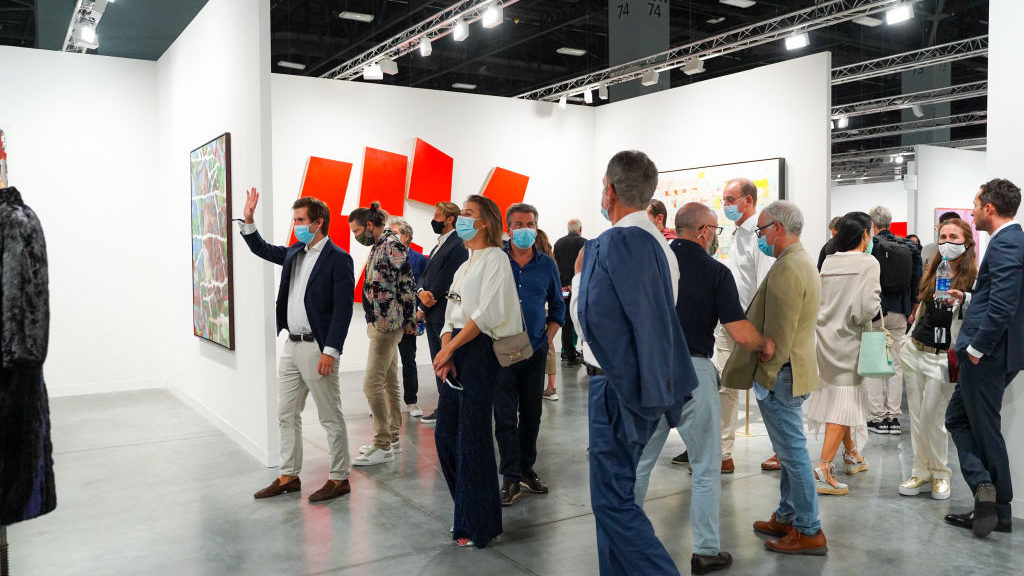VIPs including casino mogul Steve Wynn, pop star Adam Levine, actor Leonardo DiCaprio, real estate developers Aby Rosen and Michael Shvo were greeted with top-quality blue-chip artworks, such as a $50 million Rothko painting and a $15 million Willem de Kooning—as well as new safety and health protocols like mandatory vaccine screenings.
At his booth, art patrons Laurie Tisch, Anita Zabludowicz, and Beth Rudin DeWoody were snapping photos and snapping up artworks.
By mid-afternoon, when Wynn stopped by Pace Gallery’s booth, most things inside were already sold, including a painting by Loie Hollowell for $450,000 and a painting by Jeff Koons, who joined the gallery earlier this year, for about $1 million.
Pace sold Glenn Kaino’s Invisible Man NFT for $50,000, while a more expensive NFT work by Studio Drift remained unsold at $500,000.
“Good energy, but not frenetic,” said adviser Kim Heirston, who bought multiple works for clients, including a sculpture by Joel Shapiro for just under $1 million at Edward Tyler Nahem gallery and a work on paper by Basquiat for $2.5 million at Mnuchin gallery.
In the main section, London’s Victoria Miro dedicated one room to Rococo-inspired works by Flora Yukhnovich, an emerging London-based painter whose auction prices surpassed $3 million this year.
In the Positions section dedicated to single-artist presentations, Los Angeles’s Matthew Brown gallery sold out its booth of portraits on paper and canvas by Vincent Valdez, with prices ranging from $25,000 to $75,000.
“Some of them would prove to be a good investment, others won’t,” Gagosian said of the young artists sparking competition amid the current emerging-art craze.
The tactic helps provide an insurance policy on the cost of participation, although it can limit a gallery’s ability to transact with new clients.
San Francisco’s Jessica Silverman gallery sold works by all 12 artists it brought to Miami, with prices ranging from from $30,000 to $200,000, according to director Hakkı Serhat Cacekli.
